Digital Elevator Screens for Brand Promotion
June 5, 2025
Table of Contents:
Digital elevator screens offer building owners and facility managers significant opportunities for revenue generation and tenant communication. These installations combine specialized hardware with content management software to deliver targeted messaging during passenger transit periods.
Property managers evaluating digital signage solutions for elevators should consider technical specifications, content management requirements, installation constraints, and ongoing operational needs before proceeding with implementation.
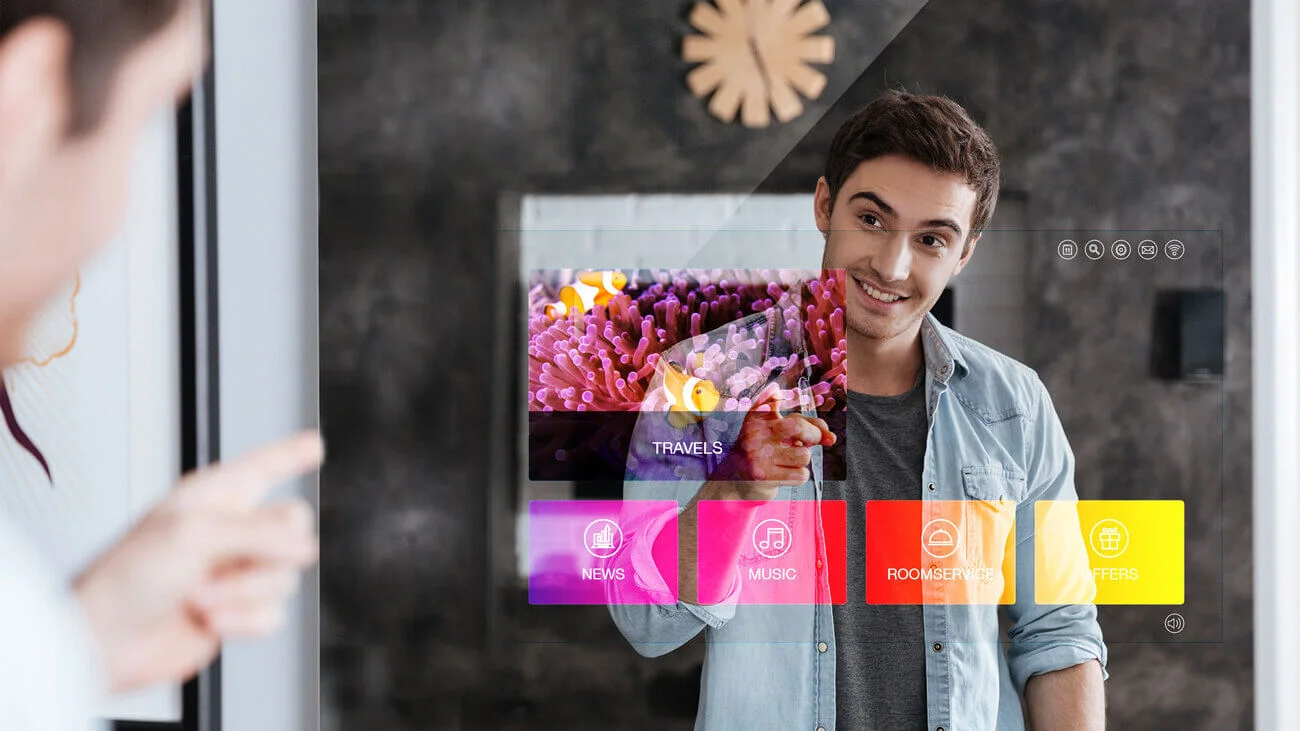
What is an Elevator Screen and How Does it Work?
An elevator digital display consists of a high-resolution display panel, mounting hardware, and content management software designed specifically for vertical transportation environments. These systems must operate reliably despite constant motion, vibration, and varying power conditions.
The technical architecture includes several key components. Display panels utilize commercial-grade technology rated for continuous operation and environmental stress. Mounting systems incorporate vibration-resistant designs that maintain stability during vertical movement. Processing units manage content delivery, system monitoring, and connectivity functions. Network connectivity enables remote content updates and system management capabilities.
Elevator media systems differ from standard digital signage through their integration with building management systems and vertical transportation control networks. This connectivity enables content adjustment based on destination floors, time schedules, passenger demographics, and building operational status. The resulting media presentations prove more relevant than static advertising approaches that ignore contextual factors affecting message reception.
Modern systems incorporate sensors that detect passenger presence, ambient lighting conditions, and operational status to optimize content presentation automatically. These capabilities ensure maximum visibility and engagement while minimizing power consumption and system wear.
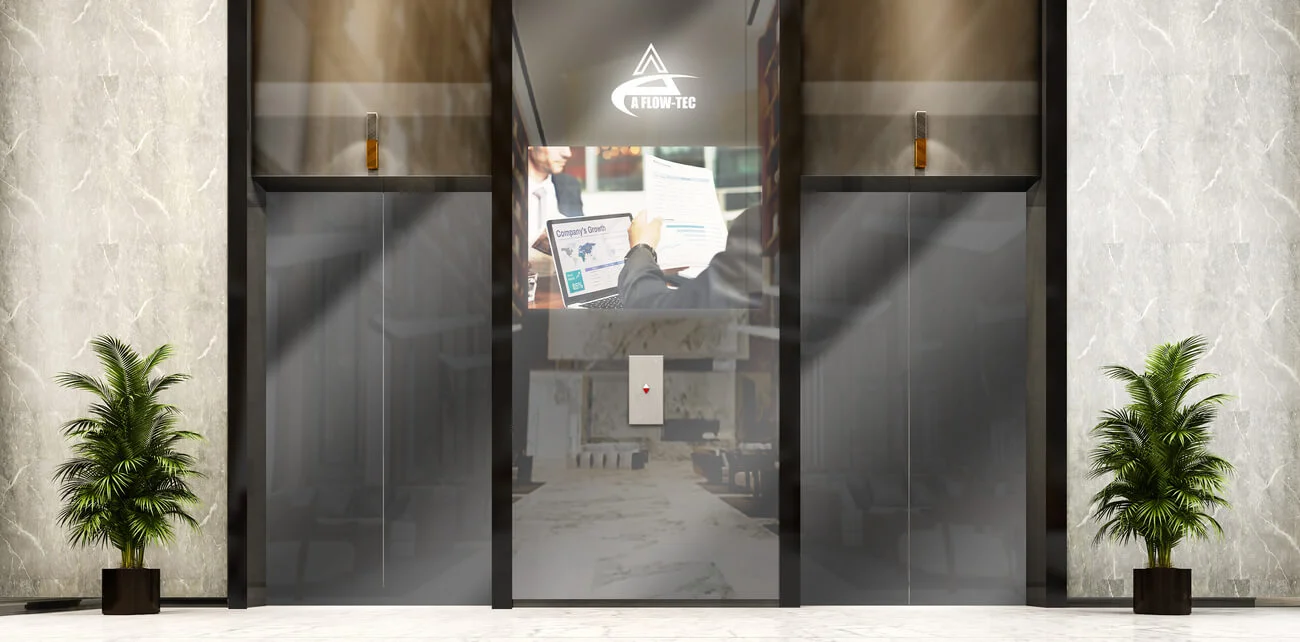
Industry-Specific Applications for Digital Elevator Displays
Mues-Tec’s extensive experience across diverse commercial sectors demonstrates the versatility of digital elevator displays in addressing specific industry needs and operational requirements. The company’s proven track record in over 50 large-scale projects spans multiple industries, each with unique implementation considerations.
Hospitality Industry Applications
Hotels and resorts benefit significantly from digital elevator screens that enhance guest experiences while generating additional revenue streams. Mues-Tec’s hospitality solutions enable properties to display welcome messages, property amenities, local attractions, and promotional content during guest transit periods. The company’s experience with luxury hotel brands demonstrates how elevator screens can reinforce premium positioning while providing practical guest information.
Corporate Office Buildings
Commercial office properties utilize Mues-Tec’s elevator screen solutions to enhance tenant communications, promote building amenities, and generate advertising revenue from external partners. Corporate environments benefit from the professional appearance and reliable performance that Mues-Tec’s commercial-grade systems provide.
Healthcare and Medical Facilities
Medical facilities require specialized consideration for elevator screen implementations due to patient privacy requirements and clinical environment standards. Mues-Tec’s systems address these unique needs through appropriate content management and professional installation practices that comply with healthcare regulations.
Retail and Shopping Centers
Shopping centers and retail environments leverage Mues-Tec’s elevator displays to promote tenant businesses, enhance visitor experiences, and create additional revenue opportunities through advertising partnerships. The high-traffic nature of retail environments makes elevator screens particularly effective for promotional messaging.
Specialized Commercial Applications
Mues-Tec’s flexibility in customization enables implementations in specialized commercial environments including airports, government buildings, and educational institutions. Each sector presents unique requirements that the company’s experience and adaptable technology platform can address.
What are the Benefits of Using Elevator Screens?
Implementation of digital display technology in vertical transportation environments delivers multiple business benefits that extend beyond basic advertising revenue to address operational efficiency, tenant relations, and property value enhancement.
Revenue Generation
Elevator screen advertising provides access to captive audiences during focused attention periods that traditional media channels cannot achieve. Passenger journey duration and confined environment ensure message exposure without typical distractions found in other advertising contexts.
Research indicates passenger recall rates for digital content significantly exceed other media formats. This performance stems from controlled environments, limited distractions, and repetitive exposure patterns inherent in regular usage.
Revenue opportunities extend beyond external advertising sales to include promotional support for building tenants, local business partnerships, and property service promotion. This flexibility enables building managers to balance external revenue generation with tenant relationship enhancement through strategic promotional support.
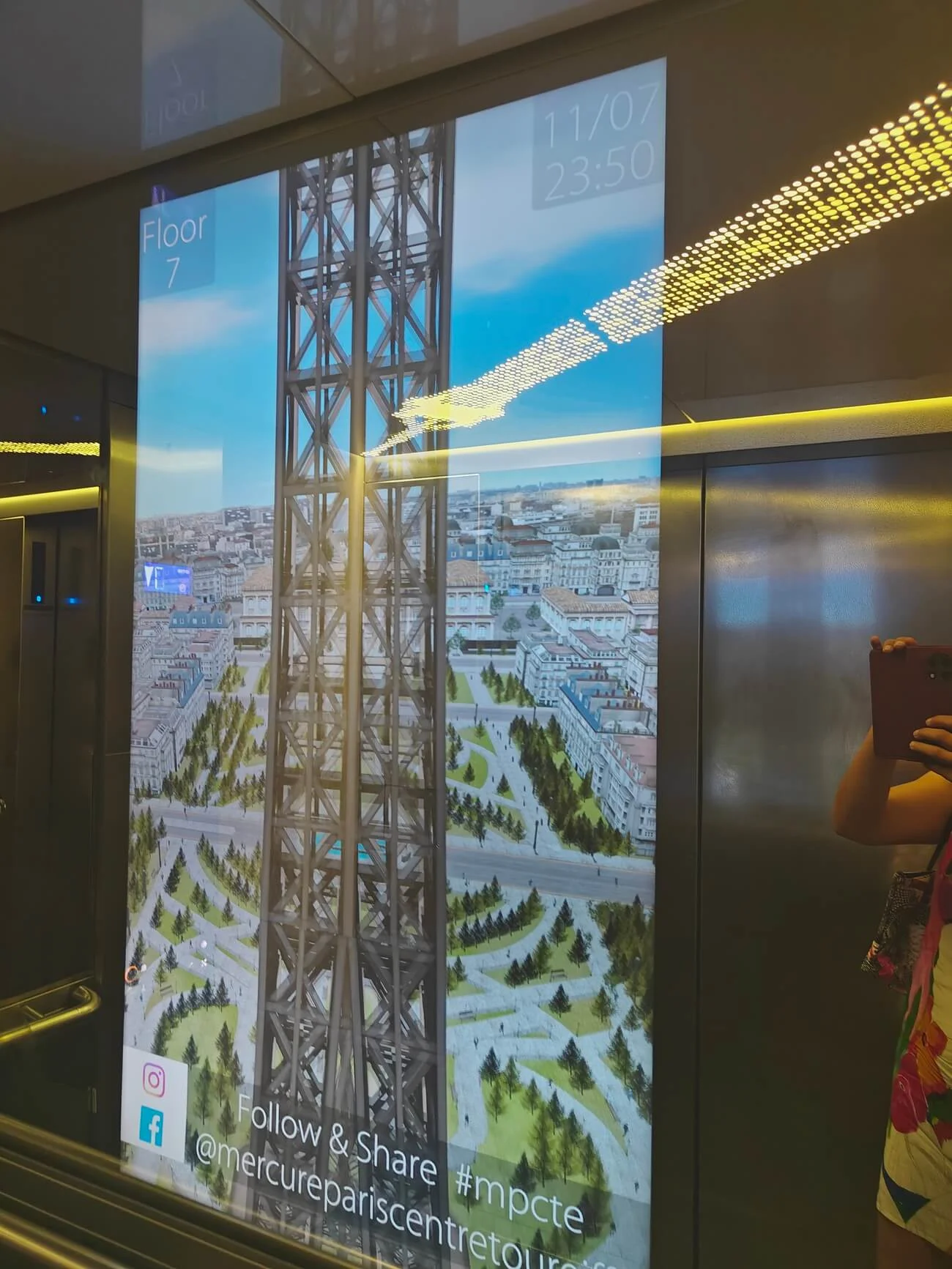
Communication Enhancement
Digital displays provide immediate building-wide communication capabilities that traditional methods cannot match. Real-time information distribution includes emergency notifications, event announcements, tenant communications, and operational updates without requiring separate distribution channels or physical materials.
Specific applications include emergency notifications requiring immediate building-wide distribution, conference and meeting announcements for building events, tenant promotional support, wayfinding assistance for unfamiliar visitors, and transportation updates affecting commuting decisions.
This communication capability positions displays within environments where building occupants are present multiple times daily. Unlike email communications that may remain unread or physical notices requiring active attention, display interfaces engage audiences during routine building usage without additional effort requirements.
Property Enhancement
Technological features create differentiation that influences tenant attraction and retention decisions. In competitive commercial real estate markets, distinctive amenities often determine leasing success and rental rate tolerance.
Property valuation specialists increasingly recognize technology amenities as value drivers supporting premium pricing and enhanced investment returns. Visible technology investments demonstrate progressive building management that prospective and existing tenants appreciate and associate with quality operations.
Operational Efficiency
Elevator digital system implementation eliminates traditional posting procedures, printing costs, and labor requirements associated with building-wide notifications. Digital format enables instant updates, correction capabilities, and scheduled messaging.
This flexibility improves communication timeliness while reducing administrative overhead associated with building management operations. Automated information distribution significantly reduces manual communication requirements and associated costs.
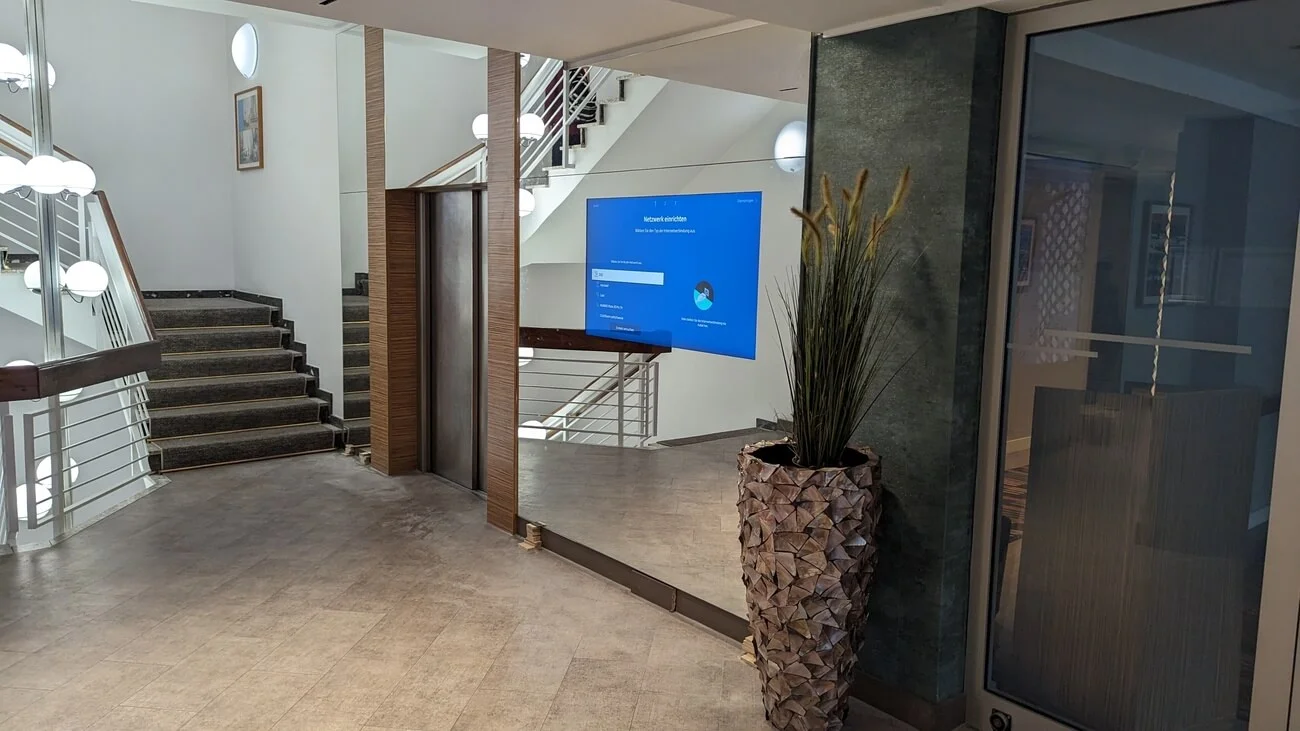
How to Manage Content on Elevator Screens?
Effective content management requires specialized platforms that address unique elevator environment requirements while supporting diverse stakeholder needs including building management, tenants, and advertising partners.
Management Platform Requirements
Modern systems utilize cloud-based content management platforms enabling remote control across multiple installations from centralized dashboards. These platforms support content scheduling, rotation capabilities, emergency override functions, and performance analytics that optimize media effectiveness while simplifying operational requirements.
Effective platforms provide intuitive interfaces requiring minimal technical expertise, enabling building managers to adjust messaging based on time schedules, special events, or specific routes within buildings.
Content Development Considerations
Successful elevator media implementation requires content specifically optimized for the short exposure periods typical of vertical transportation. Professional content development takes into account viewing distance requirements, changes in lighting conditions and attention characteristics.
Content design must take into account typical trip lengths, viewing angles in confined spaces, and message retention requirements. This optimization greatly enhances the effectiveness of advertising.
Visual elements should utilize high contrast, large typography, and simplified messages to ensure readability in varying lighting and short exposure periods. Animations and videos should take into account load times and bandwidth constraints.
Integration Requirements
Elevator display panel systems require seamless integration with existing building management, tenant communication, and advertising management systems. This connectivity ensures consistent experiences across multiple communication channels while enabling critical functionalities including emergency notifications and real-time updates.
Integration capabilities should include property management systems for tenant information, emergency notification systems for safety communications, building automation systems for operational integration, and external data sources for news, weather, and other dynamic content.
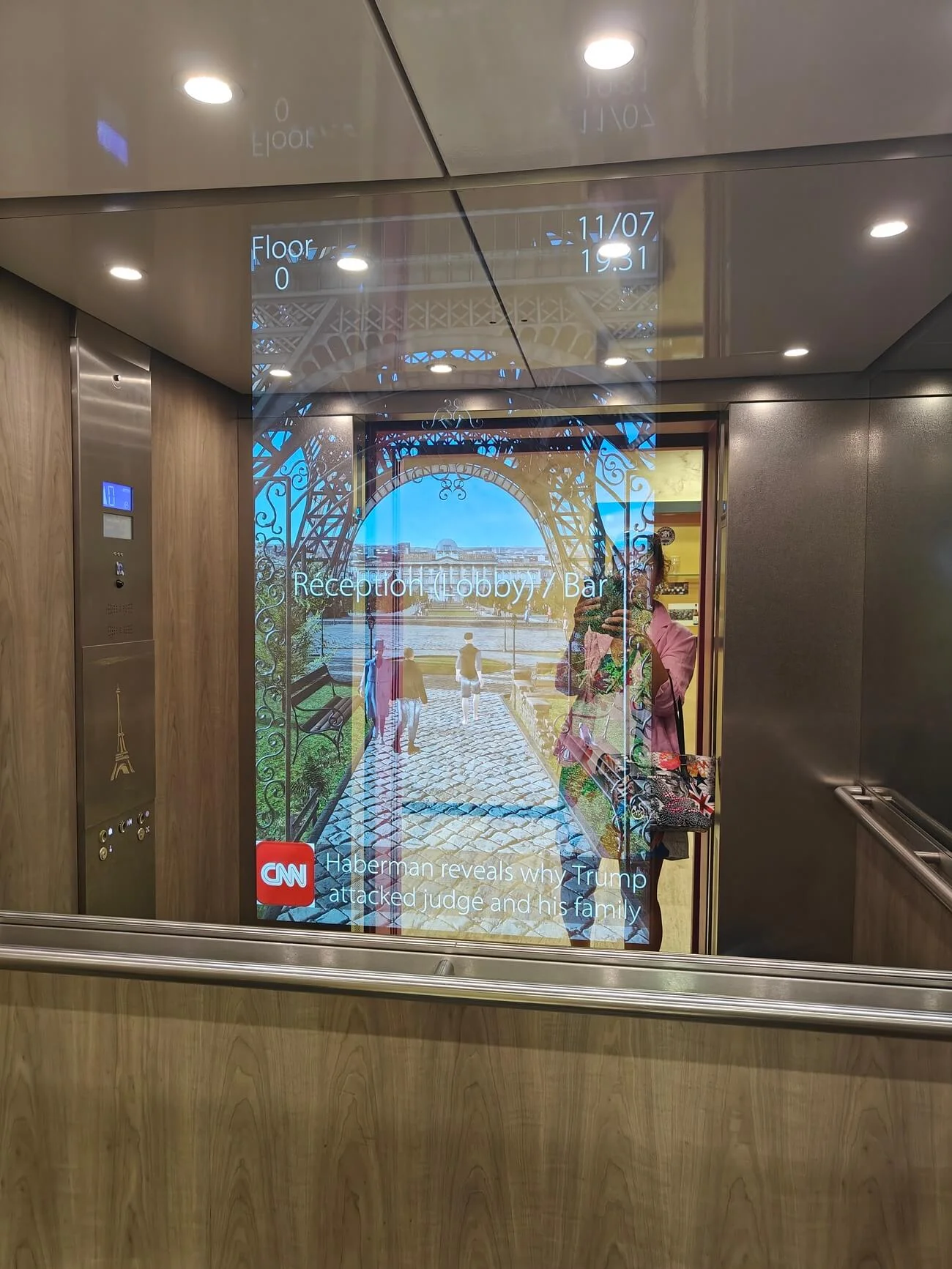
What are Common Issues with Elevator Screens?
Successful implementation requires addressing several potential challenges that could compromise performance and return on investment. Understanding these considerations enables proactive planning and appropriate solution selection.
Technical Reliability
Vertical transportation environments present unique challenges for digital equipment due to constant motion, vibration, and power fluctuations.
Environmental factors include temperature variations, humidity changes, electrical interference, and mechanical stress from continuous operation. Display systems must meet commercial-grade specifications for continuous operation and environmental tolerance.
Content Quality Management
Elevator screen advertising effectiveness depends on content quality that captures attention and communicates effectively within brief exposure periods. Poor content design results in minimal impact regardless of display quality or placement optimization.
Content management workflows should include approval processes, update schedules, performance monitoring, and revision capabilities. Quality control measures ensure content maintains professional standards and aligns with building management objectives.
Installation Requirements
Installation requires specialized expertise extending beyond standard digital signage deployment. Integration with building systems, safety requirements, and vertical transportation standards demands experienced installation teams familiar with industry regulations and best practices.
Working with Mues-Tec significantly reduces implementation risks while ensuring optimal performance and regulatory compliance.
Regulatory Compliance
Installations must comply with safety regulations and building codes affecting digital display implementation. Requirements vary by jurisdiction and building type, requiring careful assessment during planning phases to ensure compliance without operational disruptions.
Mues-Tec understands regulatory requirements and design systems maintaining compliance while maximizing functionality. This expertise prevents costly modifications or regulatory challenges following installation.
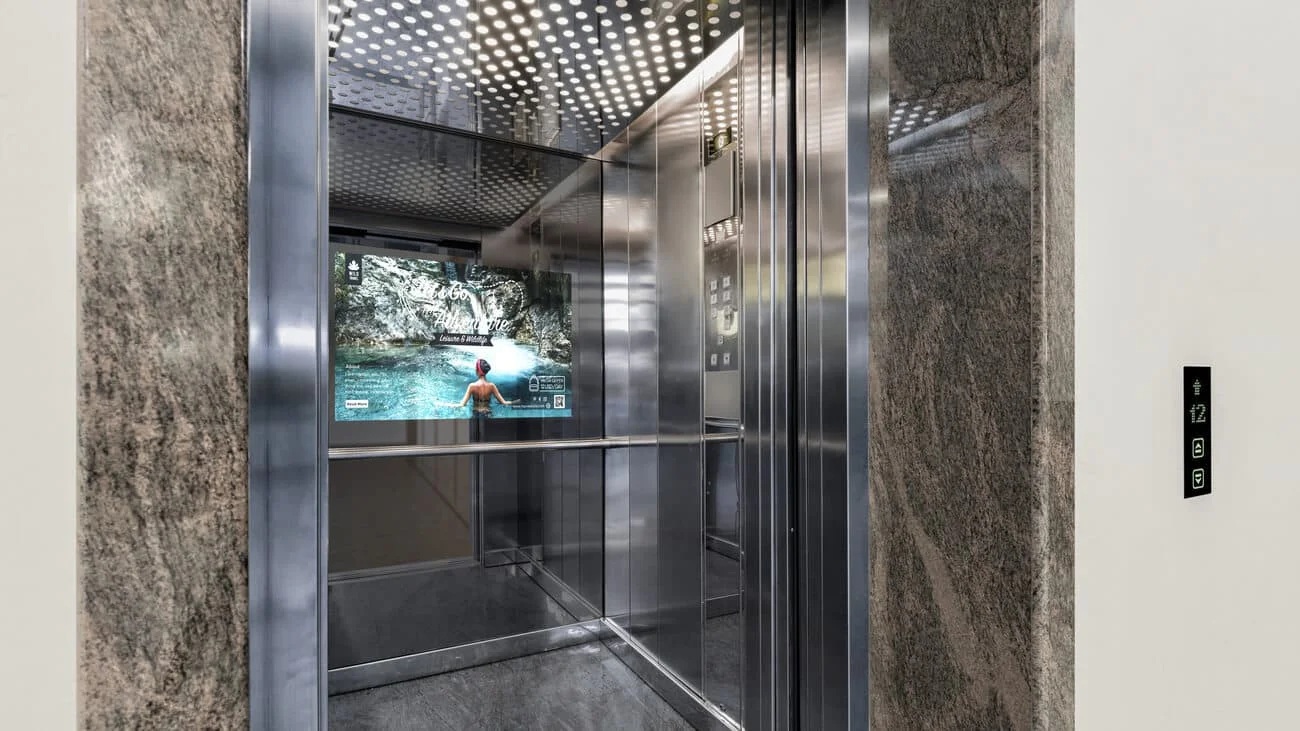
Conclusion
Digital display systems seeking revenue enhancement, improved communications, and competitive differentiation. These installations require careful planning, appropriate technology selection, and professional implementation to achieve desired results.
Properties implementing these systems position themselves for benefits and ongoing capability enhancement as technology continues developing.
FAQ
What type of content works best on elevator screens?
Effective content includes news and information displays, targeted advertising and promotions, building announcements and safety instructions, weather updates, and corporate communications. Content should be optimized for brief viewing periods with high contrast, large typography, and simplified messaging for maximum impact.
Are there special safety requirements for elevator screen installation?
Yes, installations must comply with vertical transportation industry safety standards, building codes, and fire safety regulations. Professional installation by qualified technicians familiar with elevator systems is essential to maintain safety compliance and warranty coverage.
What maintenance do elevator digital displays require?
Regular maintenance includes software updates, content management, hardware inspections, and cleaning procedures. Remote monitoring capabilities enable proactive maintenance and troubleshooting. Professional service agreements typically include preventive maintenance, emergency support, and system performance optimization.
How much revenue can building owners expect from elevator advertising?
Digital elevator displays can generate significant advertising revenue for building owners, particularly in premium commercial properties. Mues-Tec’s experience with over 50 large-scale commercial projects demonstrates that high-traffic buildings with affluent demographics achieve strong returns, though specific revenue varies based on location and audience characteristics.
What makes commercial elevator screens different from standard displays?
Commercial digital elevator displays incorporate specialized engineering for vibration resistance, space optimization, and seamless building integration specifically designed for vertical transportation environments. Professional-grade systems feature in-house developed software and robust construction that ensures reliable performance in demanding commercial applications where standard displays would fail.
Can elevator screen solutions be customized for specific building requirements?
Mues-Tec offers customized implementations tailored to specific building needs. The company can adapt solutions to meet diverse architectural and operational requirements across different markets, ensuring optimal integration with existing building systems.
Recent articles
September 26, 2025
Touchscreen Mirror Applications: From Bathrooms to Retail SpacesSeptember 19, 2025
Digital Mirrors: Technology, Features, and ApplicationsSeptember 8, 2025
Smart Mirror Link Integration: Connecting Apps and Devices